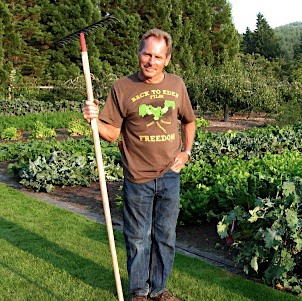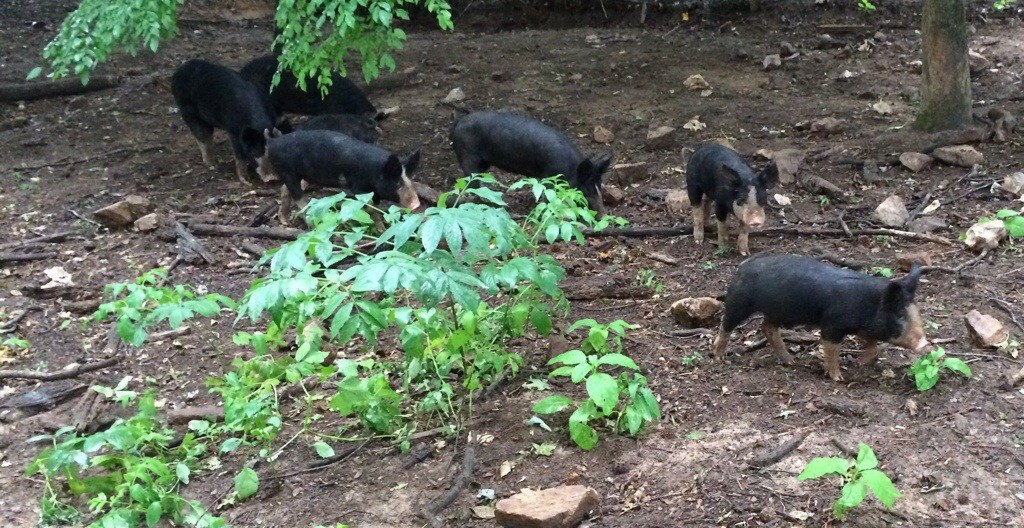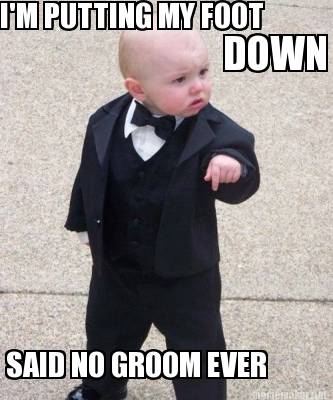Nice article on what we do here, especially how we use the blog to help on the farm.
Pretty cool. Our farm is getting some press.
7125 Old Stage Road Raleigh NC 919-322-0197
Nice article on what we do here, especially how we use the blog to help on the farm.
Pretty cool. Our farm is getting some press.
I’d had the chance to read an article published by CFSA about getting inspected to process chickens on farm under North Carolina’s farmer exemption. We get requests routinely for pasture raised chicken and have to turn people away because we don’t have any chicken beyond what we produce for ourselves and we haven’t been inspected for selling it yet.
Well yesterday we had a very nice man from NCDA come out and perform not only a chicken processing inspection but a meat handlers inspection as well. The entire process was very informative and very similar to how it was described in the article mentioned above. Turns out, the inspector was the same fellow who had worked with the farmer in the article and he was more than willing to spend time educating us on best practices and helping us through the regulatory process which turns out isn’t too bad at all. I’d avoided asking anyone from the government onto our farm for some time because I didn’t want the hassle or the trouble that can sometimes be associated with them. However after working with Wake County Soil and Water for the past few years, I’ve learned that our local government people are very encouraging of farmers and truly do want to help us and see us succeed. It doesn’t mean we don’t have to dot our Is and cross our Ts, but everything was straight forward and easy enough to handle. There certainly weren’t any gotchas in the process.
In hindsight I wish I had called the inspector in sooner, I’d have saved myself a lot of reading and worrying over things that in the end weren’t a big deal and didn’t apply to us anyway. The inspection is free and low stress. If you have not had your inspections performed, I recommend you reach out to the NCDA and get one set up.

When we have people visit for a tour they are often young parents with new kids. They are just getting into the lifestyle of knowing where your food comes from and they are searching almost every aspect of their diet out and trying to improve it. That means they are finding farmer’s markets, finding farmers like us directly, and finding ways to produce their own food. Some of them are starting their first gardens or are retrying a garden again after having failed in the past.
Whenever someone is new to gardening, we always stop by our garden here on the farm and I try to save them years of labor and frustration by explaining our simple but effective gardening techniques. It’s a challenge to explain to someone what and how it is that we garden and I’ve always struggled to give them something to go back and reference when they leave. My only thing I could point to was Lee Reich’s book, Weedless Gardening which was the book that got me started down our current path and has worked very well for us. The problem is I can tell my recommendation wasn’t going to get read by most people because they are going to drift off into Lasagna Gardening or some other such source of info. When someone isn’t sure how to plant beans, it’s hard to keep them from ordering other books on gardening and getting information overload and frankly that’s what we have with gardening, information overload. Plant 2″ deep, 6″ apart in hills. Prune in this month only. Side dress with bone meal. Plant in acidic soil. Don’t plant in acidic soil. If you start reading all the things each type of plant needs, you need a chemistry degree and 5 different gardens for all the diverse requirements.
Now I’ve discovered (it was made in 2011, I’m slow to find these things out) a movie has been made about the type of gardening we do. It’s called Back to Eden and the best part is the movie is free to watch at the link. Just scroll to the bottom and watch away. They do ask for donations if you are so inclined, something you can decide after you watch it.
The only real difference between what they are doing in the movie and what I do is that I don’t utilize wood chips very often, I prefer grass clippings and mulched leaves because we have lots of grass and lots of leaves but no chipper.
(Update for 2018, we now utilize wood chips exclusively. Only because we get them so much easier now. Grass clippings work just fine)
Also planting by hand is more pleasant to me in grass than in wood chips as it’s a softer material. The downside is it breaks down faster than wood chips so we have to mulch more often but since we mow the grass anyway, we have to put the clippings somewhere so the reality is, I’ve never had enough mulch for my garden. Rather than go haul in wood chips, I prefer to use the already bagged grass as my mulch and it works just fine. As in the movie, I simply keep 4-6 inches of mulch over my soil and plant into the beds where and when I want. I’ve never had too much mulch but whenever I get below 4 solid inches of compacted mulch (it’s fluffy when you first apply it) I start getting weeds. By adding plenty of grass clippings I am adding weed seeds by the pound but have very few weeds.
I don’t have a compost pile. I did years ago because all the books and experts said you should but I quickly grew tired of the work associated with hauling everything to the pile, turning it regularly, then hauling everything back. Now, anything I compost I compost directly on the garden bed and simply cover it with more grass next time we mow. No special compost turners, no heavy labor flipping a compost pile and beautiful black loamy soil for our garden as the final product. I don’t worry about the brown to green ratio. Any excess nitrogen is off gassed as the grass goes from green to brown sitting on top. I’ve even emptied the chicken coops directly onto the garden beds as an experiment. Chicken poop is known to burn plants due to its high nitrogen content. Even with high concentrations of chicken litter (1/2 of the total mulch or better), we had no adverse effects in our garden and it composted away in short order without turning, moving, etc.
As another experiment with this mulching method, I took two planters that my father had built and did a test on them. My father took the “well-drained soil” idea to new heights when he built these brick planters. The are filled with masonry sand, completely. There is no soil in the planters at all. I believe his plan was to only add soil from the pot he planted from and to water and fertilize where he wanted life. The dry, lifeless sand wouldn’t support life everywhere else and his planters would be weed free. He did grow plants in these planters because he could grown anything anywhere when he wanted to however they still produced weeds so it wasn’t a total success. These planters had been relatively fallow for some years when I decided to try a simple experiment. I took a small weedy section of a planter and added a top layer of grass clippings. I kept the grass there for about a month and left it completely alone. When I pulled back the grass, about half of which was gone through decomposition, the sand in the top inch or so was gone as well. Instead I had a layer of black, soft soil teeming with life. Bugs, worms, etc. I proceeded to mulch the rest of the beds and now if someone wants to see when we are discussing gardening, I show them 6 inches of black loamy soil under my mulch layer. I’ve never tilled, never fertilized, never done anything but add grass and leaves on top and I went from coarse masonry sand to perfect garden soil in less than a year.
If you garden, or want to garden, I recommend you watch Back to Eden and give the recommendations a try in your garden. I know these techniques worked for me.

It’s funny, the people I talk to that raise hogs outdoors, on the ground, in natural conditions aren’t dealing with this epidemic at all. And we in NC are at ground zero of this epidemic per this article. So it would stand to reason that housing animals in confinement, shoulder to shoulder with their peers by the thousands, may not be the safest way to produce healthy pork after all.
Kind of like how chicken pox swept through cities while the cure was found in milking sheds (cowpox) in the country. Or how rabies had the same effect in cities. Massing many of anything in a small area makes for problems we don’t normally see otherwise. One more reason I’m happy to have our animals on pasture and in organic farming practices.
As I’ve mentioned many times before, we haul fresh produce from two farmers markets every day and feed our pigs and our cows with it. For the pigs, it’s their main ration. For the cows, it’s a supplement. Today we had a call that there was a trailer of watermelons the farmer wanted us to take. Since the only trailer I’d seen was a class 8 (tractor-trailer sized) trailer, I wasn’t sure what we were getting into.
http://instagram.com/p/r7l1Fgjgih/
Here is a picture of the trailer as we found it at the market. A heavy-duty tag trailer loaded to the gills with watermelons and ready to depart as soon as we backed up to it. Now I didn’t take this thing across the scales but I’ve pulled plenty of heavy loads and if this trailer didn’t have 18,000-20,000 pounds of watermelons on it, it didn’t have any.
http://instagram.com/p/r7l98Bjgiy/
The trailer after we’d safely arrived home. Some of these watermelons are fine and some are definitely not any good. But all were already loaded, covered, and the trailer was ours for the taking. As a goodwill gesture we are going to fix a few things wrong with the trailer while we have it because this entire endeavor cost me gas and time. Not a bad return on investment.
http://instagram.com/p/r7mM7zDgjV/
This is part of the load already spread in the pasture. These watermelons won’t go to the pigs or the cows. There are simply too many watermelons for our animals all at once and keeping them around just allows them to go bad. So instead we place the watermelons in an area where the grass is underperforming. This load of melons will add a ton, actually many tons of organic matter and water to an area where the soil is lacking. Next year, this area’s soil will be black and dark and prime for growing grass, and most likely, watermelons.
We will break open these melons and allow the chickens, the birds, and my bees to have their fill for the next few days. From below the worms and bugs will be doing a number on whatever is in contact with the ground. I wonder if this means we’ll have watermelon honey this fall. May be worth taking out one comb just to sample.
For the last two days when we’ve gone out to get Dottie for her mornings milking, there has been Barry White playing as we pull up. Dottie is in heat again and Benjamin is definitely on the job. Since Benjamin is a force of nature and is currently thinking with the little brain only, we decided to just leave Dottie and Benjamin in the pasture to consummate their relationship. Dottie had been giving little milk already the preceding few days and we were already out of milk at our house so giving up two mornings milkings wasn’t exactly a treat. Especially since we had to get up, get the milking equipment prepped and ready, open up the barn, then find out we weren’t milking.
Hopefully tomorrow we’ll be able to milk.
Hopefully Ben’s work will take this time and we’ll have a little calf next May.
http://instagram.com/p/rt7przjgoP/
This week SWMBO had dinner for me as always but I want able to make it home one night. This morning I found the steak she had defrosted and decided steak and eggs sounded good for breakfast. However she had some deviled eggs that needed to be eaten so I grabbed those instead. And a tomato was sitting on the counter fresh from the garden. Looks good. And before you think I am crazy, I lost over 50 pounds eating like this. This is the breakfast of champions and 100% came from our farm.
http://instagram.com/p/ro5E6qDguY/
Last night #12 had a little calf. She had him during one of the worst thunderstorms we’ve had in a while. The fields were already wet and three more inches of rain fell during the storms. We have flooding in all of our low-lying places, water standing in any place it can collect, and generally squishy footing everywhere else. With all this water, I think this little cutie should be named Noah. I just hope he gets to work on building that Ark because it looks like we are going to need it.
http://instagram.com/p/rpmbl_Dgrb/
http://instagram.com/p/rpl9ikDgqo/
Noah will be a keeper. He’s the son of Benjamin and #12. 12 is a baldy Angus that we’ve been keeping an eye on the last few months because she was BEYOND pregnant. In fact, here is the closest thing to a picture I have of her.

Well, without the guns. #12 was as wide as she was long with a very high body condition so it wasn’t all being pregnant. A lot of it was fat which means she’s thriving under our management system. Between Benjamin’s genetics, and hers, I think Noah will finish out to a really nice steer in a few years. That means come fall of 2016 we’ll have a really nice animal to sell, right when we hit our fall flush of grass to finish him on. Perfect.

Note I didn’t say we were out of beef, just beef we can sell. If you recall, SWMBO said that I could sell some of our personal beef from our latest cow. Well this weekend she came home, looked in the freezer, counted the number of children we have (Still at a 3 count. They are resilient little buggers) and declared that all the remaining beef belonged to her. Now I did protest a bit. I said, “But Honey, I have people who still want to buy. They have money. Their kids are starving and trying to live off of McDonald’s. Think about the children.”
I found that I was talking to myself at that point and stopped trying. SWMBO had already left the room and gone about her business. I do care about my customers, a lot. But I care where I sleep somewhat more so if you want some Ninja beef, you’ll have to get an invite over for steak night from SWMBO.
In all seriousness, thanks to everyone who bought our beef. I’d appreciate any feedback anyone has, good or bad. We’re pretty happy with how our latest cow turned out but it’s not my opinion that matters, it’s yours.
We’re growing more cows as fast as we can. I’m looking forward to having a freezer full of beef for everyone this fall.
This post is a bit of a time warp. I accidentally never posted it. It’s actually from a few weeks ago. I was testing out posting to Instagram rather than posting directly to our website. Then I link the picture from Instagram inline with the post. Extra steps but I’m hoping some of the odd formatting that WordPress does to our pictures will go away.
Today we had our cows in the back pasture. This pasture is at the far corner of our farm, and at its lowest elevation. Normally our milking routine has close and closer pastures so each morning is not so much of an adventure. Walking completely across the farm, up the road, past the houses makes for a long trip. We don’t normally put the cows in the back pasture but there was grass galore and the cows needed some grassy fun after being in the woods for a week.
http://instagram.com/p/rUD2VUDgmd/
So this morning everyone got to enjoy hiking through the waist-high grass looking for the cows. Of course they were sitting in the woods, snickering at us as we went the wrong direction. Finally we found them and walked Dottie out and up to the barn. It was a long walk, and up hill the entire way. Of course we will tell the kids it was uphill both ways but that’s another story.
It was a long trek in the dark but everything worked out fine and milking went smoothly.
Tomorrow should be easier as Dottie will know where to meet us. The first day in a new area is always a bit confusing.